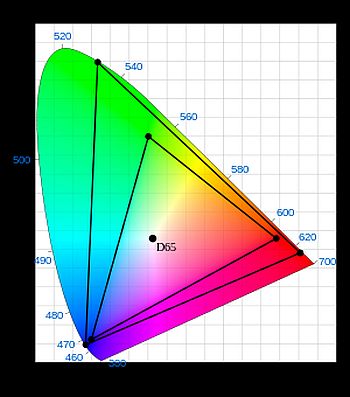But before we move on, let’s clarify: Digital TV (DTV) and HDTV don’t have the same meanings, even though they’re sometimes used interchangeably in casual conversation. DTV refers to the manner in which something is broadcast; HDTV refers to the format it’s broadcast in. DTV can also be broadcast through digital signals in other formats, such as standard definition (SDTV). The differences of these formats will be discussed later in this article. For a more detailed look at television, read How Television Works.
Bringing HDTV to the level of an internationally recognized standard format, from its humble origins a couple of decades back, is still going on. Because the process of developing and marketing new technologies is so lengthy, engineers have already started the task of developing the technology that’ll proceed HDTV. This is where ultra-high definition TV comes in.
Ultra-high definition TV is still largely in the prototype stages. It was pioneered by engineers at the NHK Science and Technical Research Laboratories (Nippon Hoso Kyokai, also known as the Japan Broadcasting Corporation). If you hear about super hi-vision (SHV), you’re probably hearing a reference to this same technology, as well as if someone says ultra-high definition video or UHDV. There are many different versions of these terms, either hyphenated, combined and/or capitalized in varying ways. To avoid confusion, in this article we’ll simply use the term ultra-high definition TV or UHDTV.
UHDTV’s goal is to create a vivid, television-watching experience, where the lines of realism and television are blurred. According to manufacturers, people will watch ultra-high definition TV and feel like they’re in the middle of a scene.
Now that we’ve cleared through the mess of monikers and acronyms surrounding TV technology, let’s jump into the differences between the various levels of definition, and find out what’s so advanced about the UHDTV format.
Developing Ultra-high Definition Technology
Just when you thought your TV was state-of-the-art, something bigger (and possibly better) is coming along. Engineers are working to develop technology that goes far beyond the capabilities of current broadcasting systems, hardware and household electronics such as TVs and video cameras.
NHK first got involved with HDTV technology back in 1964 [source: Heingartner]. Thirty-one years later and studies concerning ultra-high definition TV began to take form. In 2002, NHK engineers put on the first public demo of a prototype ultra-high definition video system, and from there, the research continued. Researchers are working to improve the quality of the UHDTV system, software and equipment, because all this technology must be developed and built from scratch. Let’s put it this way — think about the far-spanning innovations needed to make cell phones a reality out of their predecessor, the rotary phone.
Some of the experiments the technicians are doing include devising ways to perfect the image appearance, speed signal transfer rates and create the optimum viewing experience. NHK’s goal is to begin producing experimental satellite broadcasts in 2015, and have the technology ready to roll in Japan by 2025. So far they have had a number of demonstrations, installations and live relay experiments, like the one from Kamogawa Sea World to NHK lab headquarters.
To put it simply, the main way ultra-high definition differs from high definition is in the quality of the viewing experience. The focus of the UHDTV development efforts revolve around the idea of delivering more information to the viewer, in a way that increases the realism of the viewing experience.
But before we get into the technical details, let’s talk more about how NHK engineers went about developing this technology and the challenges they faced. For example, it’s all well and good to build a projector that can display UHDTV, but where do you get an ultra-high definition image from in the first place? You’ve certainly never seen an image like that on your home television screen, through your video camera or even at the movie theater. In other words, NHK also needed to develop a camera, a camera control unit and other equipment that would record and process ultra-high definition video images.
Then there’s the signal transmission. We’re talking about an extremely data-laden video signal here, so strategies for handling large volumes of information became a central concern of the technology’s development. Transmission can also encompass a couple of different necessities. For example, transmission could take place from where the images and sounds are recorded to where they’re viewed, like in the case of live TV. Or, the signals could be transmitted from where they’re filmed to where they’re stored, like in the case of movies or standard broadcast television. Researchers also needed to develop equipment and programs that could encode, compress and store these vast amounts of data.
Now that we’ve had a closer look at the plans for this TV technology and read about the work that’s going into developing UHDTV, are we ready to see the big picture? Click to the next page for the scoop.
For more Detail: How Ultra-high Definition Works

